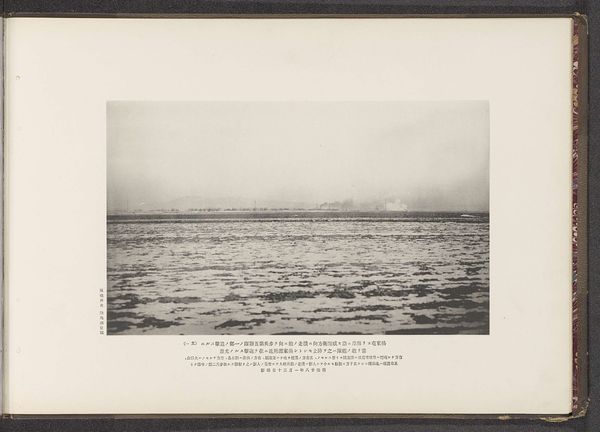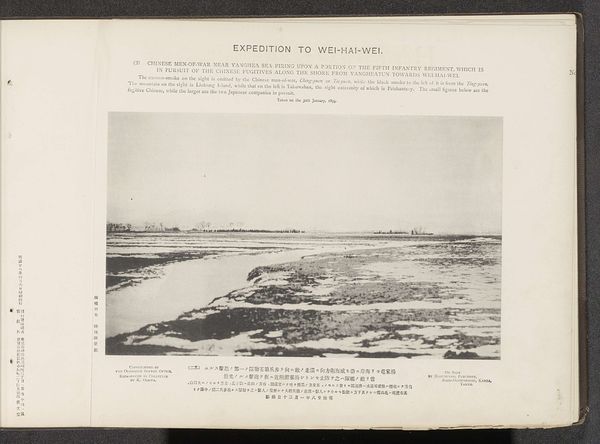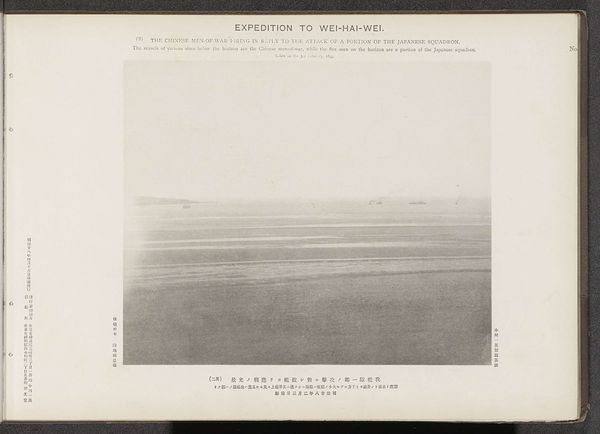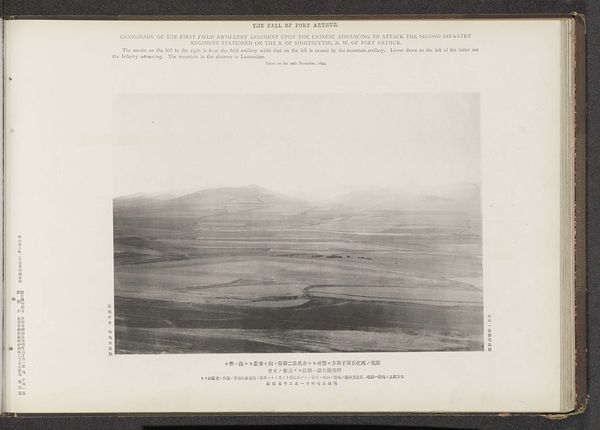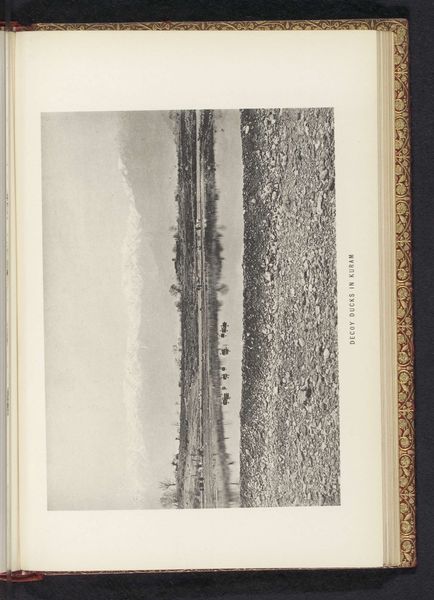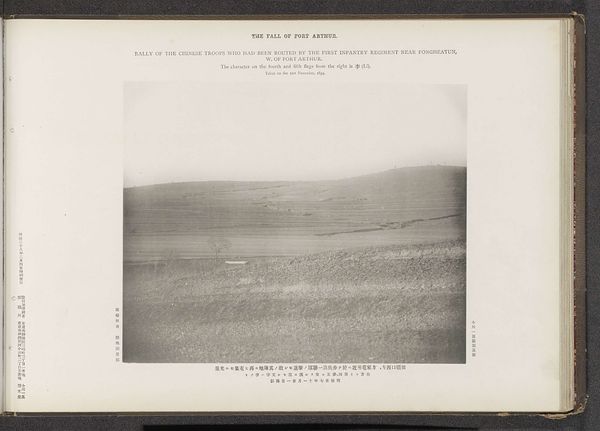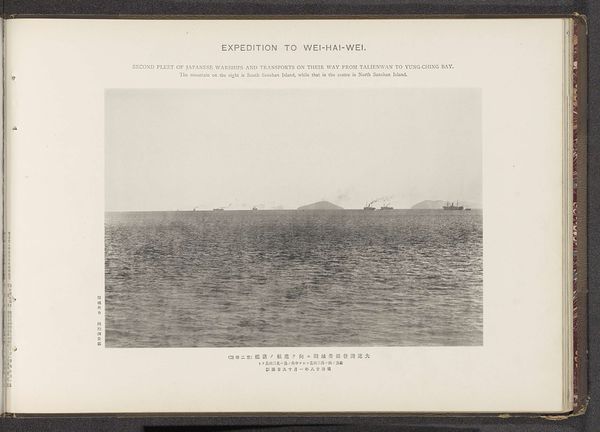
The firing of Chinese men-of-war from Yanghea sea, S. of Wei-Hai-Wei upon a portion of the fifth infantry regiment (second stage) Possibly 1895
0:00
0:00
print, paper, photography, gelatin-silver-print
# print
#
asian-art
#
landscape
#
paper
#
photography
#
orientalism
#
gelatin-silver-print
#
history-painting
#
paper medium
#
realism
Dimensions: height 176 mm, width 282 mm
Copyright: Rijks Museum: Open Domain
Editor: This is a gelatin-silver print titled "The firing of Chinese men-of-war from Yanghea sea, S. of Wei-Hai-Wei upon a portion of the fifth infantry regiment (second stage)", possibly from 1895, by the Ordnance Survey Office. It's... bleak. Very sparse composition, and honestly quite unsettling in its depiction of conflict. What can you tell me about what's going on here? Curator: The bleakness, as you put it, speaks volumes. This isn't a heroic battle scene; it’s a record, almost clinical in its presentation. Notice how the smoke plumes are just as important as the implied violence. This image is steeped in cultural memory – specifically, a memory of technological disparity. Editor: Technological disparity? Curator: Look at the position of the Chinese troops. They’re almost subsumed by the landscape, dwarfed by the sea and the horizon, whereas the naval artillery dominates the visual space, becoming a symbol of a modern form of warfare that was beyond the existing structures. Think of the implications: How would the image be different, psychologically and culturally, if the land forces were dominant, and the ships small dots on the horizon? Editor: I see your point. The small figures create this immense feeling of vulnerability. It's not glorifying anything. More of an observation, I suppose? Curator: Indeed, the image reveals not just a historical event but the psychology behind that event and how it may have shaped cultural views then – and maybe continues to even today. Perhaps now it can be viewed through our evolving psychological landscape with fresh eyes. What are your feelings about that point? Editor: That adds so much depth to what I initially saw as just a desolate landscape. It highlights how a single image can hold layers of cultural meaning and emotional impact across time.
Comments
No comments
Be the first to comment and join the conversation on the ultimate creative platform.
